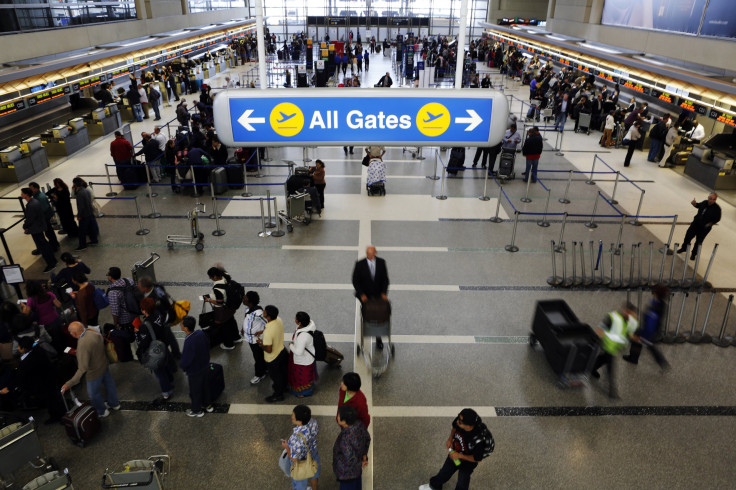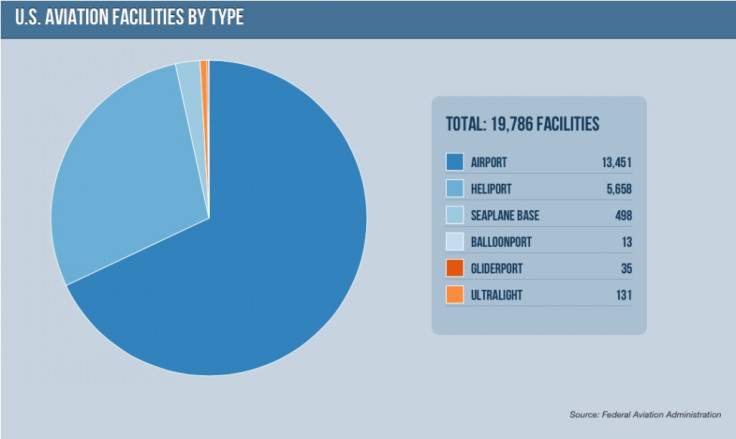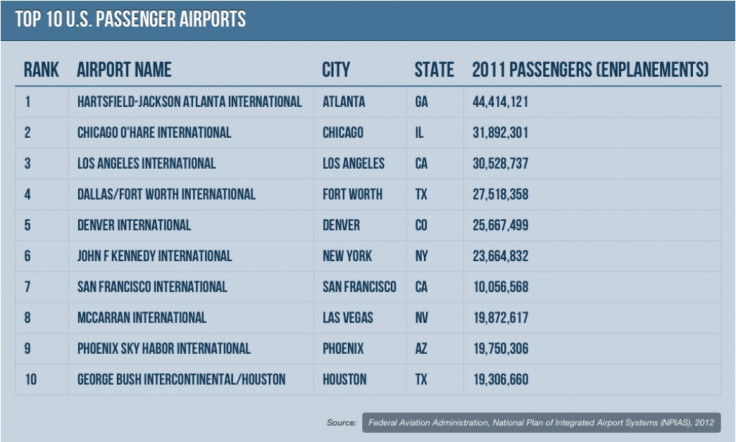American Aviation Infrastructure Crumbling Under Growing Passenger Numbers, Costing US Economy Tens Of Billions Every Year

Between 2000 and 2011 the number commercial aviation flights in the U.S. increased by around 33 million, pushing the limits of an already stretched aviation system to handle the growing load, according to the American Society of Civil Engineers.
The increasing load on the nation's aeronautical infrastructure is taking an economic toll. For example, congestion cost the economy $22 billion in 2012 and is expected to increase from $34 billion in 2020 to $63 billion in 2040, according to the Federal Aviation Authority.
A recent report by the American Society of Civil Engineers graded the nation’s aviation infrastructure a D, which equates to a rating of poor.
The recently released "2013 Report Card For America’s Infrastructure" has given the United States a D+ for the overall national infrastructure, which incorporates sectors such as Aviation, Energy, Parks and Recreation, Rail, Roads and Schools among others, and suggested that the nation's infrastructure needs $3.6 trillion to meet the economy's growing demands.
The grades ranged from a B- for solid waste to a low D- for inland waterways and levees. Solid Waste, drinking water, wastewater, roads and bridges all saw slight improvements, with rails jumping from C- to a C+.
Aviation
According to the report, the U.S. aviation industry is made up of 3,300 existing public use airports and 25 proposed airports which make up the National Plan of Integrated Airport System (NPIAS).
Around 499 of those airports are for scheduled air carrier use, including 29 large hub airports, such as Chicago O’hare, JFK and LAX.

The overall system accommodates $562 billion in cargo per year in addition to the 728 million passengers. However, as the system is expected to be carrying more than 1 billion passengers by 2040 and $1 trillion worth of cargo, the current system, according to the report, will have to grow significantly which will put continued stress on the already troubled system. And there is a double incentive to ensure that these increases are received smoothly.
“In 2011, the FAA reported that the total output of aviation-related goods and services amounted to $1.3 trillion in 2009, and generated more than 10 million jobs,” said the report.


To help this growth, the FAA have been developing the Next Generation Air Transportation System (NextGen), which will, firstly, replace the countries ageing radar system that was last updated in the 1960s. By ensuring this update, the flow of traffic into airports should be improved which will alleviate congestion and expand the capacity of many airports accommodate passengers.
The project will cost the FAA around $11 billion by 2018 and $32 billion by 2025, however the costs do not incorporate the research, airport and associated improvements to accommodate extra passengers or the aircraft equipment to realize the project’s goals.
Recent successes include a $20 million project to replace old style airfield lighting at Raleigh-Durham airport in North Carolina with FAA-approved LED lighting, which will save around $400,000 a year in electricity costs. Seventy-Five percent of the costs of replacing 230 signs and 3,200 bulbs was paid for by the federally funded Airport Improvements Program with the remaining 25 percent coming state funds and federal stimulus packages.
Similarly, the successful installation of a geothermal heating and cooling system as part of a terminal expansion at Portland International Airport cost $3 million, with $2.5 million coming from federal grants and will save the airport $160,000 in operating costs from the old oil-fired system while preventing the emissions of 1000 tons of carbon per year.
While steps are being taken to improve the current situation, the report says that more has to be done for the aviation industry and the infrastructure of the country overall, which includes safeguarding federal funding which has been threatened in recent fiscal cuts.
“An aviation system that was once the envy of the world is beginning to be overtaken by countries with ambitious investment programs for development of dozens of airports, and U.S. airports are no longer ranked among the world’s best by air travelers,” said the report’s conclusion.
© Copyright IBTimes 2024. All rights reserved.












